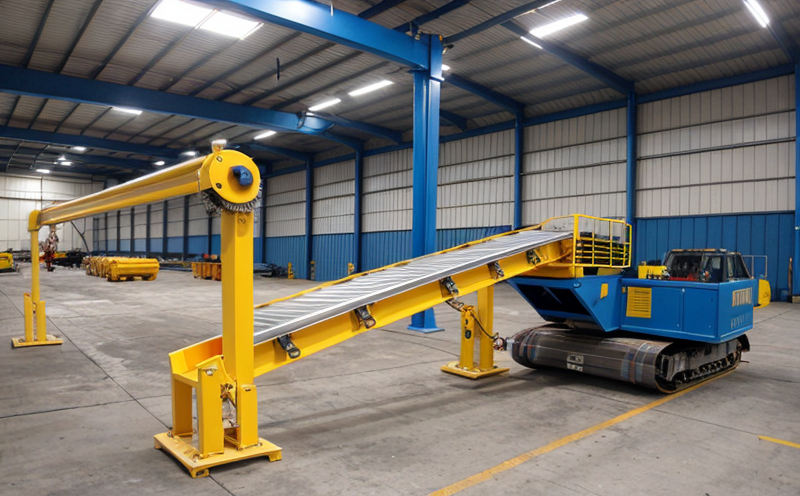EN 12882 Conveyor Belt Flammability Testing
The European Standard EN 12882 sets out clear guidelines and methods to evaluate the flammability of conveyor belts used in mining operations. This testing is critical for ensuring safety, compliance with regulations, and preventing potential hazards associated with fire incidents within industrial environments.
Flame propagation can lead to catastrophic failures that may disrupt production processes, cause property damage, and most importantly, endanger human lives. Therefore, the rigorous flammability tests prescribed in EN 12882 are paramount for mining companies operating conveyor belts. This standard ensures that materials used comply with stringent safety measures, thereby enhancing operational reliability.
The testing protocol outlined in this document focuses on determining how quickly a conveyor belt ignites and spreads flames under controlled conditions. It also evaluates the rate at which flame propagation occurs along the length of the belt when exposed to ignition sources such as sparks or embers. By adhering strictly to these procedures, laboratories can provide accurate assessments that help operators make informed decisions regarding material selection.
Testing according to EN 12882 not only guarantees adherence to legal requirements but also contributes significantly towards improving overall mine safety standards. This standard plays an essential role in promoting best practices across various sectors including construction, manufacturing, and transport where similar materials are employed.
Scope and Methodology
| Procedure for Determining Flame Propagation | |
|---|---|
| Initial Setup: | The conveyor belt sample must be prepared according to specified dimensions, ensuring it is free from contaminants that could affect test results. |
| Ignition Source: | An appropriate ignition source (e.g., a burner) should generate sufficient heat to ignite the conveyor belt without causing excessive pre-ignition damage. |
| Testing Environment: | The environment must be controlled, typically using a chamber capable of maintaining specified temperature and humidity levels throughout testing. |
| Data Collection: | Parameters such as time-to-ignite, peak flame length, and residual burn rate are recorded to assess the flammability behavior accurately. |
| Acceptance Criteria for Flame Propagation | |
|---|---|
| Flame Spread Index: | The flame spread index should not exceed a predetermined threshold value set forth by the standard. |
| Total Duration of Flame Spread: | This metric measures the overall time taken for flames to traverse the entire length of the belt, providing insight into its resistance against fire spread. |
The EN 12882 standard specifies precise methods and equipment needed for conducting flammability tests on conveyor belts. Laboratories must ensure they possess all necessary apparatuses like burners, calorimeters, and environmental chambers to conduct accurate evaluations.
Benefits
- Enhanced Safety: Ensures that materials used in mining operations meet strict safety standards by preventing accidental fires caused by conveyor belts.
- Regulatory Compliance: Helps organizations comply with international regulations and directives related to material flammability testing.
- Risk Mitigation: Reduces the risk of injury or loss due to fire incidents in mining facilities.
- Informed Decision-Making: Provides valuable data for selecting appropriate materials based on their flammability properties, thus optimizing operational efficiency.
Competitive Advantage and Market Impact
- Compliance with international standards enhances brand reputation and trust among clients and stakeholders.
- Reduces the likelihood of non-compliance penalties imposed by regulatory bodies.
- Improves operational reliability through better-informed decisions regarding material choices.
- Promotes safer working environments for employees, contributing positively to company culture and employee satisfaction metrics.
By incorporating EN 12882 testing into their quality assurance protocols, mining companies can demonstrate their commitment to safety and compliance while gaining a competitive edge in the market. Adherence to this standard also fosters innovation within research and development departments by encouraging continuous improvement in material science applications.





